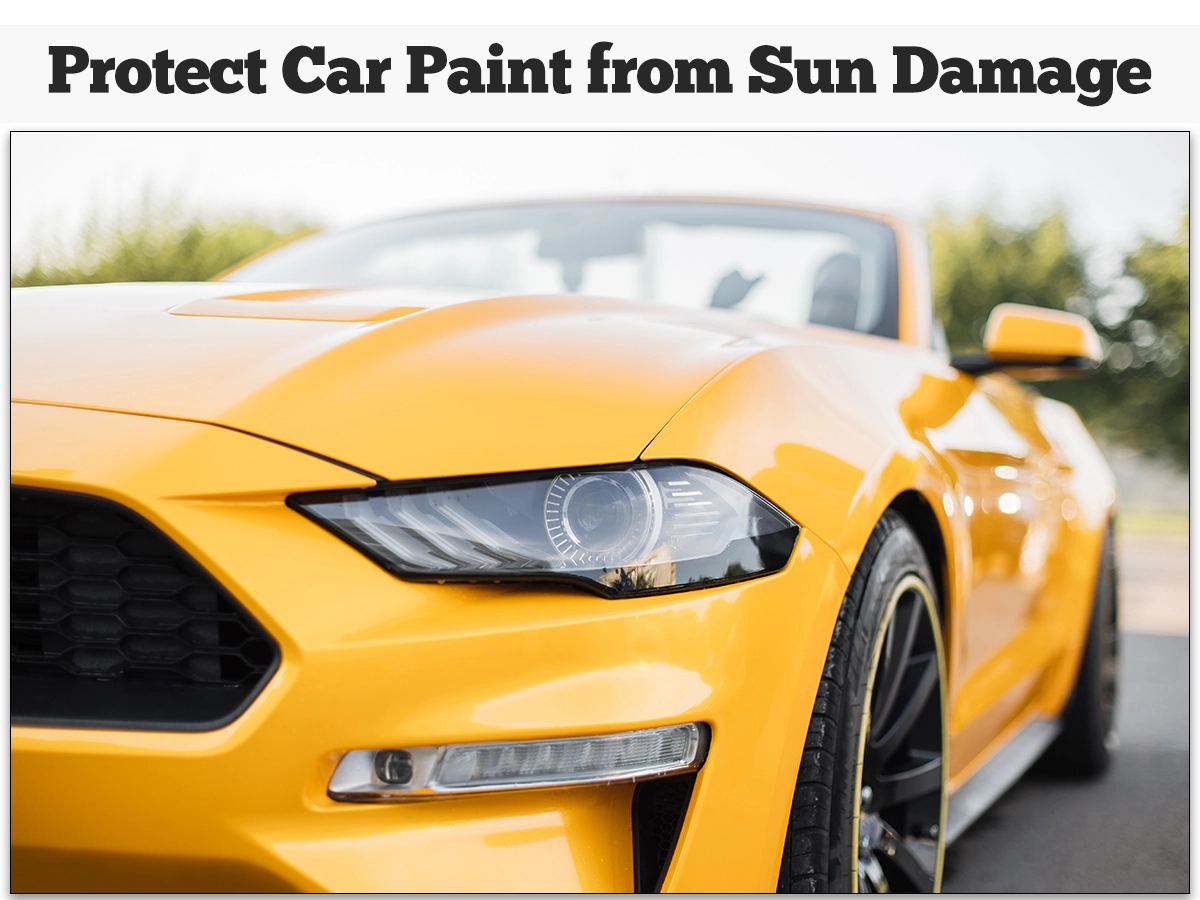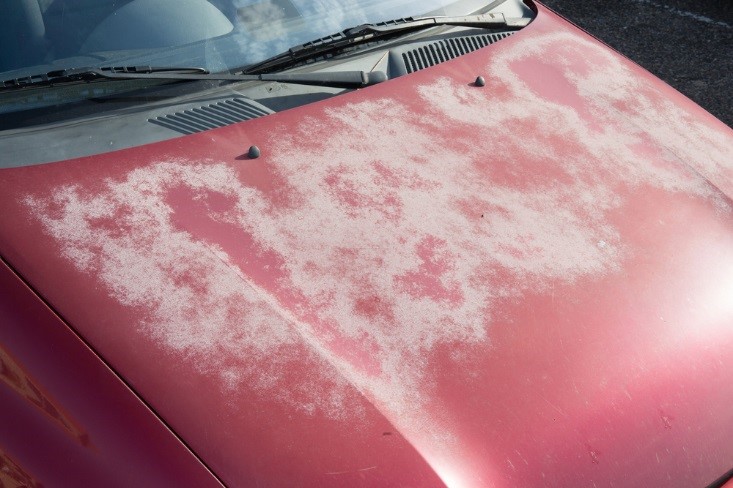To repair sun-damaged car paint, first wash the surface thoroughly and then use a light cutting compound to remove the damaged layer before applying a new layer of paint for protection and restoration. Exposure to the sun’s harmful UV rays can cause significant damage to your car’s paint job over time.
Faded, discolored, or peeling paint not only affects the appearance of your vehicle but also reduces its resale value. However, restoring sun-damaged car paint is not an impossible task. With some careful steps and a little bit of elbow grease, you can bring back the shine and beauty of your car’s paint job.
We will explore the effective methods and techniques to repair sun-damaged car paint and give your vehicle a much-needed makeover.
Understanding Sun Damage To Car Paint
If you own a car, you probably understand the importance of keeping its exterior in pristine condition. However, with prolonged exposure to the sun, your car’s paint can gradually deteriorate, losing its shine and luster. It’s essential to understand the causes and effects of sun damage on car paint to take appropriate measures and keep your vehicle looking its best.
Causes Of Sun Damage
Excessive sun exposure can take a toll on your car’s paint job. The primary cause of sun damage is the ultraviolet (UV) rays emitted by the sun. These UV rays can penetrate the top protective layer of your car’s paint, breaking down its molecular structure over time. Additionally, intense heat and dry conditions can exacerbate the damage, causing the paint to fade and become dull.
To further compound matters, environmental factors such as pollution, bird droppings, and tree sap can interact with the sun’s rays, speeding up the deterioration process.
Effects Of Sun Damage On Car Paint
The effects of sun damage on car paint can be quite noticeable. Over time, you may observe several changes in your vehicle’s appearance:
- Fading: The vibrant color of your car’s paint may start to fade, becoming dull and lackluster.
- Chalking: The surface of the paint may develop a chalky residue, making it feel rough to the touch.
- Oxidation: Sun damage can cause oxidation, leading to a hazy or cloudy appearance on the paint surface.
- Peeling or Cracking: Prolonged sun exposure can weaken the adhesive properties of the paint, causing it to peel or crack.
It’s important to address sun damage as soon as you notice it to prevent further deterioration. Not only will restoring your car’s paint improve its appearance, but it will also protect the underlying metal from corrosion and rust.
Now that we’ve covered the causes and effects of sun damage on car paint, it’s time to explore the various methods you can use to repair and revitalize your vehicle’s exterior. Stay tuned for our upcoming blog posts, where we’ll dive into the best practices and step-by-step guides for repairing sun-damaged car paint.

Credit: bravoprotectionmn.com
Assessing The Extent Of Sun Damage
Sun damage to car paint can be assessed by examining the extent of UV discoloration, faded paint, and dullness. To repair sun-damaged car paint, you can consider using a high-quality polish and wax, applying a fresh coat of paint, or seeking professional help from an auto body shop.
Keep your car protected from the sun’s harmful rays to prevent further damage.
When it comes to sun damage on your car’s paint, assessing the extent of the damage is crucial. This step will help you determine the best course of action to restore the paint and maintain the aesthetic appeal of your vehicle. In this section, we will discuss two methods to assess sun damage: Visual Inspection and Using a Paint Thickness Gauge.
Visual Inspection
Visual inspection is the first step in determining the level of sun damage on your car’s paint. By examining the surface of the vehicle, you can get a general idea of the extent of the damage. Here are some key factors to consider during the visual inspection:
- Look for faded or discolored paint: Sun damage can cause the paint to lose its original color, appearing faded or discolored. Pay close attention to areas exposed to direct sunlight, such as the hood, roof, and trunk.
- Check for paint peeling or cracking: Prolonged sun exposure can cause the paint to deteriorate, leading to peeling or cracking. Inspect the edges and corners of the paintwork for any signs of damage.
- Examine the surface for roughness: Sun damage can create a rough texture on the paint surface due to oxidation. Run your fingertips gently over the paint to feel for any rough patches.
By conducting a thorough visual inspection, you can gather valuable information about the condition of your car’s paint and determine the extent of the sun damage.
Using A Paint Thickness Gauge
To obtain a more accurate assessment of sun damage, you can use a paint thickness gauge. This handy tool measures the thickness of the paint layer on your car’s surface, allowing you to identify any areas where the paint has been significantly affected by sun exposure. Here’s how to use a paint thickness gauge effectively:
- Select the appropriate mode: Most paint thickness gauges offer two modes – ferrous and non-ferrous. Make sure to choose the mode suitable for your car’s body material (e.g., steel or aluminum).
- Calibrate the gauge: Follow the manufacturer’s instructions to calibrate the gauge properly. This step ensures accurate measurements.
- Place the gauge on the painted surface: Gently press the gauge against the car’s paint to obtain a reading. Move the gauge around different areas to get a comprehensive understanding of the paint’s thickness.
- Interpret the readings: The gauge will provide measurements in micrometers or mils. Compare the readings with the manufacturer’s specifications or consult a professional to determine if the paint thickness is within a healthy range.
By using a paint thickness gauge, you can assess the sun damage precisely and determine if the paint needs repair or restoration. Remember, if you’re unsure about using the gauge or interpreting the readings, it’s always advisable to seek professional assistance.
Steps To Repair Sun Damaged Car Paint
Your car’s paint can suffer damage from the harsh rays of the sun. Luckily, repairing sun damaged car paint is a straightforward process that you can do yourself. In this section, we will outline the steps involved in repairing sun damaged car paint, from cleaning and prepping the surface to applying compound, polish, and wax, and finally, preventing future sun damage.
Cleaning And Prepping The Surface
Step 1: Start by thoroughly washing your car to remove any dirt, dust, and grime from the surface. Use a pH-neutral car soap and a soft microfiber cloth to avoid further damaging the paint. Rinse the car thoroughly and dry it using a clean cloth.
Step 2: Next, inspect the paint for any signs of fading or discoloration caused by sun damage. If you notice any rough or uneven areas, use a clay bar kit to gently remove contaminants from the surface. Follow the instructions provided with the clay bar kit for best results.
Step 3: After using the clay bar, examine the paint again. If there are still imperfections, you may need to use a paint cleaner or polish to further smooth the surface. Apply the cleaner or polish using a foam applicator pad or a dual-action polisher, following the manufacturer’s instructions.
Applying Compound, Polish, And Wax
Step 4: To restore the shine and remove any remaining imperfections, apply a cutting compound to the affected areas. Use a foam or microfiber pad and work in small sections, applying the compound in circular motions. Buff the compound using a clean, soft cloth.
Step 5: Once you have removed the imperfections, it’s time to apply a polish to enhance the shine of the paint. Use a foam or microfiber pad to apply the polish, working in sections. Again, buff the polish using a clean cloth for a smooth, glossy finish.
Step 6: Finally, protect the freshly repaired paint by applying a wax or sealant. Apply the wax using a foam applicator pad or a dual-action polisher, following the instructions on the product. Allow the wax to dry to a haze, then buff it off with a clean, soft cloth for added protection and shine.
Preventing Future Sun Damage
To prevent future sun damage, follow these steps:
- Park your car in shaded areas whenever possible.
- Use a car cover or UV-protective coating to shield the paint from sun exposure.
- Regularly wash and wax your car to maintain a protective barrier on the paint.
- Avoid parking under trees that may drip sap or bird droppings, as these can damage the paint when exposed to sunlight.
- Consider using a paint protection film or ceramic coating for long-term sun protection.
By following these steps and taking preventive measures, you can restore and protect your car’s paint from sun damage, ensuring it stays looking its best for years to come.

Credit: www.cuttingedgeref.com

Credit: medium.com
Conclusion
To restore your car’s sun-damaged paintwork, follow these simple steps. Begin by thoroughly cleaning the vehicle’s surface and then proceed with sanding, compounding, and polishing. Don’t forget to protect the paint with a high-quality wax or sealant. Regular maintenance and protection will extend the life of your car’s paint, keeping it looking fresh and vibrant.
By taking the time to repair sun damage, your car will regain its former glory and leave a lasting impression on everyone you pass by.

